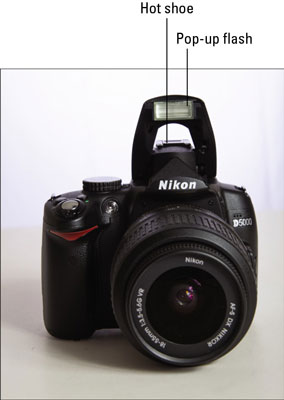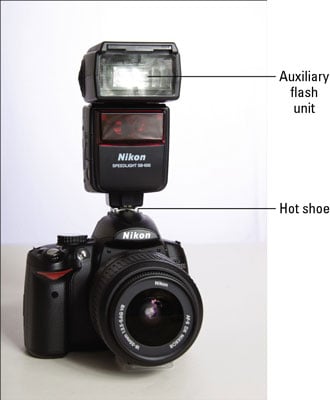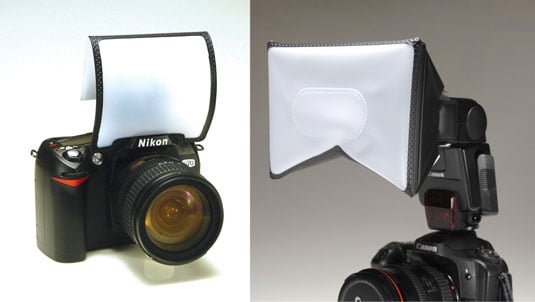As a rule, you rely on natural lighting for nature photography. However, you can use on-camera flash or an auxiliary flash unit to augment natural lighting.
On-camera flash
Most digital cameras come with an on-camera flash. The flash unit pops up when needed. You can also enable on-camera flash when you need to add a bit of light to a scene. This is known as fill flash. The light from on-camera flash is harsh.
If you are able to get close enough to an animal to use on-camera flash effectively, you’ll end up with the equivalent of red-eye. It's better to avoid any type of flash on wildlife because it can frighten them. However, adding a splash of light when photographing flowers can be useful.

Auxiliary flash
Many digital point-and-shoot cameras and most digital SLR cameras have a hot shoe, which is a slot on the top of the camera that will accept a flash unit. If the flash unit is recognized by the camera (for example, a Canon flash with a Canon camera), the camera communicates with the flash and automatically sets the flash exposure based on the ambient light and camera settings.
The position of the auxiliary flash unit puts the light source above the camera, which results in better looking shadows than those created with a small on-camera flash. You can also bounce most auxiliary flash units off other surfaces, which diffuses the flash and results in a more pleasing light source.

If you have an advanced digital SLR that supports wireless flash, you have the power to control flash units that are not connected to your camera. In essence, the auxiliary flash unit acts as a slave to the camera flash.
The sensor on the slave unit looks for the infrared beam from the on-camera flash as a signal to fire. You use the camera menu to control the power of the auxiliary flash unit. You can also control multiple flash units.
Diffusers
The biggest problem with on-camera or auxiliary flash is the size of the light source. A flash unit emits a pretty powerful beam of light, but it is very small and falls off quickly. Because the flash unit is small, the lighting is fairly harsh and creates garish knife-edge shadows. You can increase the relative size of the light source with a diffuser.
As the name implies, the diffuser spreads out the light, making it appear as though the light originated from a large source. The sun is like your flash unit. In comparison to the objects on earth, it’s a relatively small light source.
Add some clouds, and the light is nicely diffused. Your flash and diffuser need to be fairly close to your source, just like the clouds are fairly close to the objects on earth when you compare the distance of the clouds to the distance of the sun.

The figure shows different diffusers made by LumiQuest. The camera on the left has a diffuser mounted on the pop-up flash unit; the camera on the right has a diffuser mounted on an auxiliary flash.

